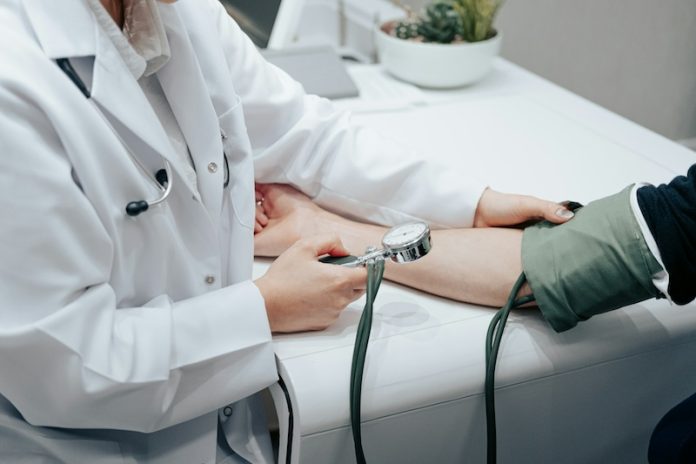
White coat hypertension is a condition where a person’s blood pressure readings are higher when taken in a medical setting, such as a doctor’s office, compared to readings taken at home or in other non-medical environments.
This phenomenon can be puzzling and sometimes misleading, as it might suggest that a person has high blood pressure when they actually don’t.
Let’s explore the causes of white coat hypertension and how it can be treated, using simple language.
The term “white coat hypertension” comes from the white coats traditionally worn by doctors. The condition is thought to be caused by the anxiety or nervousness some people feel during medical appointments.
This anxiety can cause a temporary increase in blood pressure, leading to readings that are higher than usual. It’s estimated that about 20-30% of people who have high blood pressure readings in a medical setting actually have normal blood pressure in other settings.
Research shows that the sympathetic nervous system plays a key role in white coat hypertension. When a person feels anxious or stressed, their body releases stress hormones like adrenaline.
These hormones cause the heart to beat faster and the blood vessels to constrict, which raises blood pressure. This response is part of the “fight or flight” mechanism that prepares the body to deal with perceived threats, including stressful situations like a visit to the doctor.
While white coat hypertension itself might not be as dangerous as sustained high blood pressure, it’s still important to address because it can be a sign of an underlying condition called masked hypertension.
Masked hypertension is when blood pressure is normal in a medical setting but high in everyday life, which can increase the risk of cardiovascular problems if left untreated.
Treating white coat hypertension involves a combination of accurate diagnosis and strategies to manage anxiety. The first step is to ensure that the elevated blood pressure readings are not due to a chronic high blood pressure condition.
This typically involves monitoring blood pressure at home over a period of time using a reliable home blood pressure monitor. Keeping a record of these readings and sharing them with your healthcare provider can help distinguish between white coat hypertension and true hypertension.
Ambulatory blood pressure monitoring (ABPM) is another method used to diagnose white coat hypertension. ABPM involves wearing a portable device that measures blood pressure at regular intervals over 24 hours, including during sleep.
This provides a comprehensive picture of blood pressure variations throughout the day and night, helping to confirm whether high readings are limited to the medical setting.
Once white coat hypertension is confirmed, addressing the anxiety that causes it is crucial. Relaxation techniques such as deep breathing exercises, meditation, and mindfulness can help reduce anxiety levels before and during medical appointments. Practicing these techniques regularly can help make them more effective in stressful situations.
Another approach is cognitive-behavioral therapy (CBT), a type of therapy that helps people change negative thought patterns and behaviors associated with anxiety. CBT can be particularly useful for individuals who experience significant anxiety during medical visits.
Lifestyle changes can also help manage white coat hypertension. Regular physical activity, a healthy diet, and adequate sleep can all contribute to lower overall anxiety and improved heart health. Reducing caffeine and alcohol intake, which can increase anxiety and blood pressure, might also be beneficial.
For some people, medication may be necessary to manage both blood pressure and anxiety. If lifestyle changes and anxiety management techniques are not sufficient, healthcare providers might prescribe antihypertensive medications or anti-anxiety medications to help control blood pressure and anxiety levels.
In summary, white coat hypertension is a condition where anxiety in medical settings causes temporary increases in blood pressure. It’s important to accurately diagnose this condition to ensure it’s not masking chronic high blood pressure.
Treatment involves a combination of monitoring blood pressure at home, using relaxation techniques, cognitive-behavioral therapy, lifestyle changes, and, in some cases, medication.
By addressing the anxiety that leads to white coat hypertension, individuals can achieve more accurate blood pressure readings and better overall health.
If you care about blood pressure, please read studies about unhealthy habits that could increase high blood pressure risk, and eating eggs in a healthy diet may reduce risks of diabetes, high blood pressure.
For more information about blood pressure, please see recent studies that early time-restricted eating could help improve blood pressure, and results showing 12 foods that lower blood pressure.
Copyright © 2024 Knowridge Science Report. All rights reserved.



